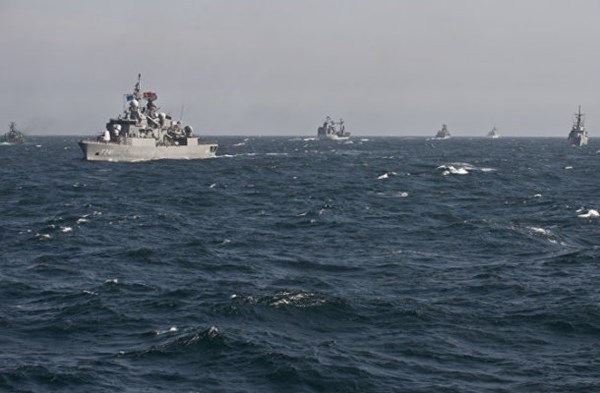American warships heading to Black Sea as Russia amasses troops on Ukrainian borders
The U.S., in accordance with the Montreux Convention, notified Turkey that two warships would pass through the Bosphorus and the Dardanelles in the direction of the Black Sea.
RIA Novosti reports, citing a source in the Turkish Foreign Ministry, that the American warships will enter the Black Sea in a week and will stay there until May 4.
A Pentagon source told CNN the day before that the U.S. plans to send a naval flotilla to Russian shores.
According to him, at the moment, the navy continues air reconnaissance to assess the activity of the Russian fleet and the movement of troops in Crimea.
So far, the U.S. does not see that Russian military is preparing for aggressive actions, but "if anything changes, we will be ready to act," a source told CNN.
The U.S. military believes that Russia is conducting training and exercises. Intelligence has not detected orders for further action, although it is likely that could change at any time, the source said.
The build-up of Russian troops near the border with Ukraine is the highest since 2014, White House press secretary Jen Psaki said at a briefing on Thursday.
"The United States is increasingly concerned about the escalation of Russian aggression in eastern Ukraine," she said, adding that Washington is discussing the situation with NATO partners.
Military equipment continues to flow into the regions bordering Ukraine. On Thursday, the convoy of Iskander missile systems of the 119th Missile Brigade of the Central Military District, based in the Sverdlovsk region, was spotted near the village of Novaya Usman in the Voronezh region, Janes's reported.
The 74th and 35th Motorized Brigades, the 120th Artillery Brigade and the 6th Tank Regiment have been deployed closer to the conflict zone.
In addition to tanks, there have been reports of trains carrying BMP, long-range artillery, BM-27 Hurricane multiple rocket launchers, as well as TOS-1 Solntsepek heavy flame-thrower systems to the border with Ukraine.
TOS-1 Solntsepek systems, shooting missiles with a special thermobaric mixture at a distance of up to 6 kilometers, can literally "ignite the air" with one volley, burning the territory equal to the area of eight soccer fields.
While the West calls on Russia to explain the increased military activity, the Kremlin continues to respond with threats.
The deputy head of the Russian presidential administration, Dmitry Kozak, said that Russia will "stand up for" its citizens living in the Donbas if there is a threat to their lives. "The resumption of hostilities will be the beginning of the end of Ukraine," Kozak threatened.
Presidential spokesman Dmitry Peskov made a similar statement on Friday. "There are fears in the Kremlin that the civil war will resume in Ukraine. And if civil war resumes near our borders, if there is a full-scale fighting, it will pose a threat to the security of the Russian Federation," he said.
Peskov added that the escalation in Donbas is "unprecedented" and stressed that Russia is "free to move the armed forces" in its territory "at its discretion."
On Thursday, German Chancellor Angela Merkel discussed the situation in the Donbas with Vladimir Putin for the second time since the beginning of the week. She demanded that Russia withdraw troops from the Ukrainian borders in order to " de-escalate the situation."
Putin responded by accusing Ukraine of "provocations" and said that Kyiv has been "recently purposefully aggravating the situation on the line of contact."
